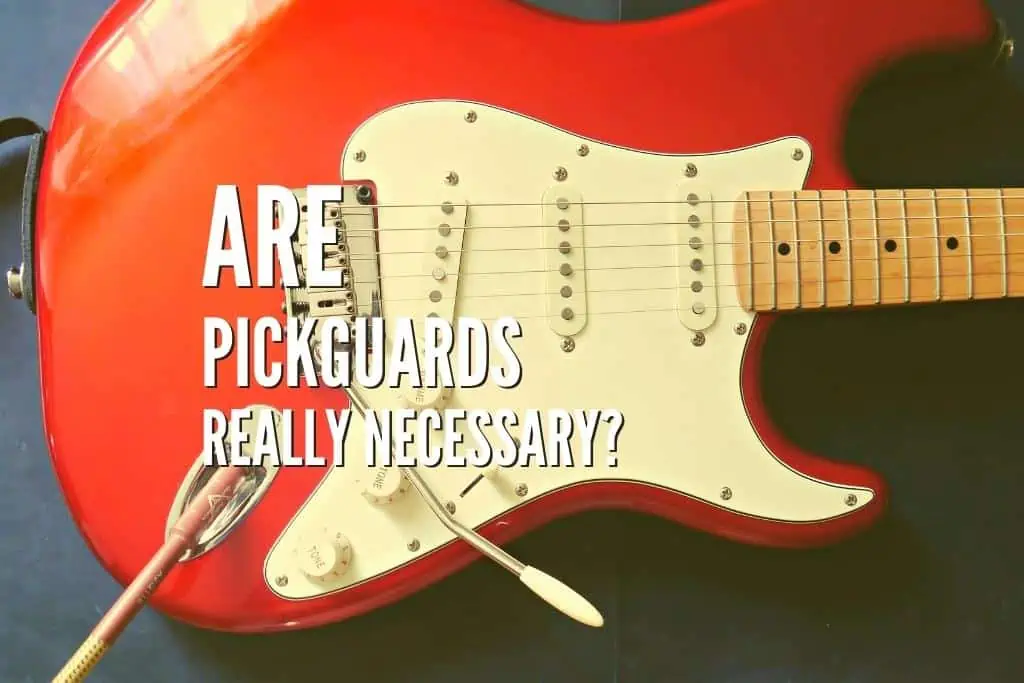Pickguards are often an overlooked topic when it comes to guitars. Most people do not even know why they exist and what they serve. Besides the aesthetic pleasure, pickguards protect the guitar’s top and also have a small say on the tone of your instrument.
First, there is a difference between acoustic guitars’ pickguards and those on electric and bass guitars. They do different things and are there for somewhat different reasons. Some of the first electric guitars were produced bearing a pickguard. But some of the first acoustics didn’t. It was a later invention on those.
So, Are pickguards really necessary? Well, on the electric guitars, pickguards have been a part of the design from the early days. So on some models, they are necessary. But for acoustic guitars, it’s a different story. If you play hard and the finish on your guitar is thin, a pickguard is necessary to protect your guitar’s top from scratches and damage. But if you play classical guitar and play it with your fingers, then pickguards are not that necessary.
But like with most things guitar-related, it’s not that simple. Even on classical guitars, in some cases, a pickguard is a must-have. Let’s see what else is there when talking about pickguards on guitars. Do you think you know it all? Let’s find out.
What Is The Point Of A Pickguard?
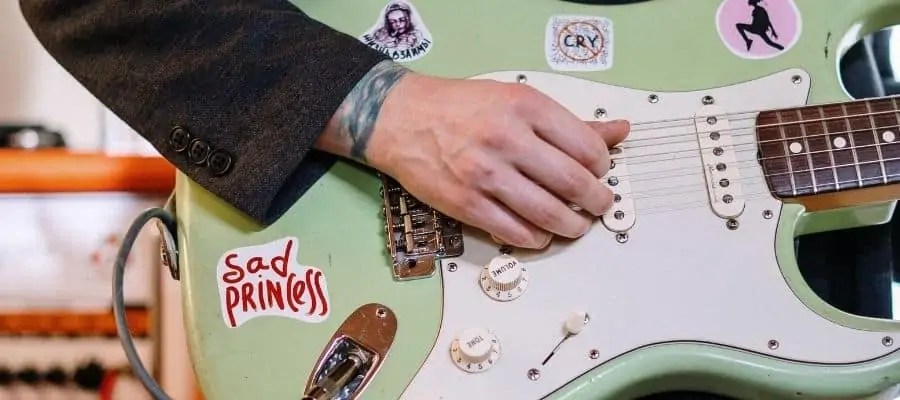
As the name says, a pickguard is a guard that protects your guitar finish from your plectrum. When we play an acoustic guitar using a pick, the downstroke of the picking hand usually finishes on the soundboard, in most cases below the soundhole on the top of the guitar. So that’s why acoustic guitars have it there.
It prevents the damage to the finish from hard strumming using a guitar pick. Over time, many thousands of individual strokes result in scratches and wear and tear appearing on your guitar top. This way pick comes in contact with the plastic material of the pickguard that is hard as the pick, rather than with softer wood on the top of the guitar.
Can Guitars Easily Be Scratched?
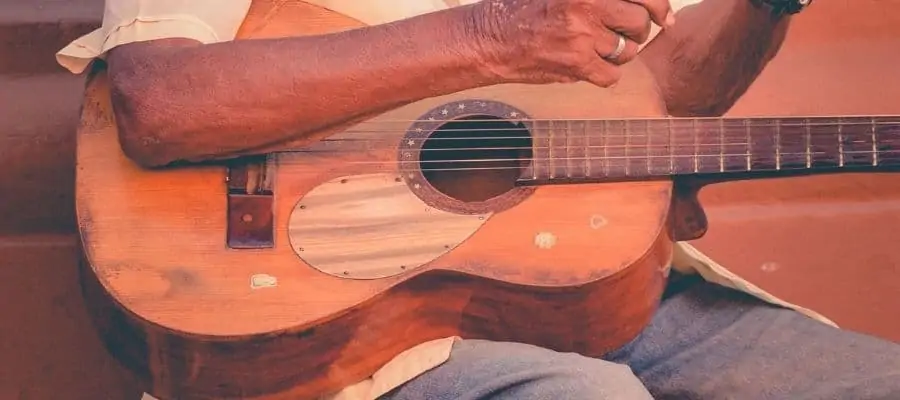
The wood that’s used for the soundboard on acoustics is picked based on its ability to resonate. It has to be lightweight yet very strong. Spruce, for example, is a resonant wood material that is also lightweight and strong. It’s the wood used in the plane industry where the strength-to-weight ratio is critical.
So this is why spruce is a great wood for acoustic guitar tops. But this type of wood is easily damaged because of its softness. Maple, on the other hand, is a denser species of wood. But its density is less resonant, making it far more useful as a guitar back and sides, where the strongness is required. And not for guitar tops, where it would be much more resilient than the spruce.
So we see acoustic guitar tops can be scratched very easily. It’s even more noticeable on guitars where a thin satin finish is applied. Not so much on electric guitars such as MIM Fender Strat, where the thick poly finish is on. So on acoustic guitar, the solution is a pickguard.
It will protect this softer wood on the guitar’s soundboard. But in recent years, relic guitars have been very sought after. That’s why many people remove the pickguard from their guitars. To proudly show the wear and tear from years of playing.
Why Do Some Guitars Have Pickguards And Others Don’t?
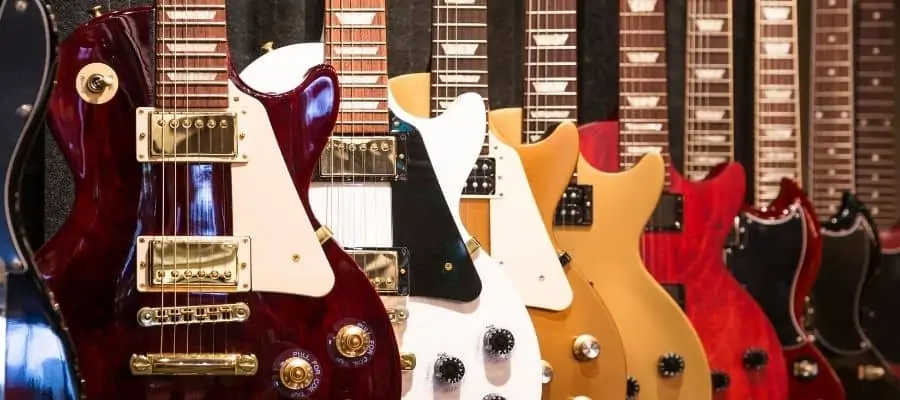
So we established that acoustic guitars have pickguards on them to protect the wood top of the guitar from the plastic pick while strumming. But, classical guitars, in most cases, don’t use pickguards. This is because classical guitars are always played with fingers, although some exceptions exist.
The result is that the guitar’s soundboard doesn’t encounter anything harder than the flesh of your fingers. But, many classical guitarists also grow and play with their fingernails. And they are capable of damaging the top of a classical guitar. But, often, this combination of flesh and nails and the nature of classical music, which doesn’t involve aggressive strumming patterns, is not so hard on the top. As opposed to steel-string acoustic guitars and using picks.
But even on classical guitar, there is an exception. It’s a flamenco style of music. It’s typically performed with great passion and rapid, aggressive strumming and percussive tapping techniques. Despite this music being played with fingers just like the regular classical, the guitar top is in need of protection. This protection is Golpeador, a flamenco pickguard.
Unlike the regular pickguard, the golpeador is usually installed above and below the soundhole. It must be because of the aggressive upstrokes and downstrokes incorporated in flamenco music. But some players want the protection but dislike the look of this gigantic pickguard. The solution is an installment of a clear pickguard. It’s barely visible, but it protects the top just like a black-colored golpeador.
Do Pickguards On Acoustic Guitars Affect Tone?

Pickguards only have a minor effect on the guitar’s tone. The effect is almost non-existent and is barely hearable. As guitars are mainly made of wood, and the pickguards are typically plastic, they dampen the sound slightly. Plastics are not as resonant as wood, but pickguards are very small compared to guitar bodies, which minimizes the effect.
Guitars are mainly made of wood as wood is a great material for vibrations to be soaked in, thanks to the gaps and grains inside the wood. This way, wood helps to increase the sustain and the depth of the tone, resulting in a more resonant instrument.
When pickguards come into play, they block this sustain and resonance slightly as plastic is not as good as wood in terms of allowing the sound vibrations to travel inside. But, the change is barely noticeable, and most people won’t hear any difference between a guitar with a pickguard and one without it.
Another reason the effect is minimal is that the top side of a guitar is not as important as the back and the side parts when it comes to resonance and sustains. With the electric guitars, the difference is even smaller, almost non-existent.
With electric guitars, even the tonewood does not play a significant role as it plays in classical and acoustic guitars in terms of tonal qualities. The pickups have a huge role to play on electric guitars creating the sound and tonal qualities.
So the question arises why are there even pickguards on electric guitars if they do not affect anything.
Why Are There Pickguards On Electric guitars?
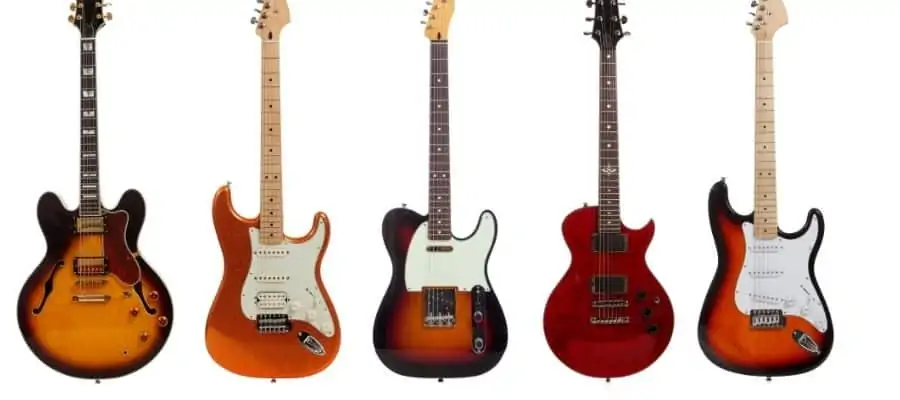
If you’ve ever wondered why some electric guitars sport a pickguard and others do not, well, so did I. They come in all sizes and shapes and can be made from almost any material. Some other names for them are scratch guards, finger rests, and scratchplates. These names indicate their function more directly.
Some guitars don’t have them, while others cannot operate without their help. But aside from protecting against a player’s picking attack, there are some different things they do.
Guitar Customization
Pickguards on electric guitars are an easy way to customize your guitar. But different materials may slightly affect your instrument’s sound. Adding, removing, or customizing a guitar’s pickguard is an easy way to personalize your guitar. It’s completely reversible, so there’s very little downside to giving it a try.
I’m not sure how much luck you’ll have in fine-tuning your sound with a pickguard change, but be aware that it can make a small difference. Some people simply like the look of guitars with a pickguard compared to the ones without it. There are many pickguard choices in different colors, shapes, and designs, giving a personalized look to guitars. There are many different models, like the ones with Pearloid colors and the ones that cover a lot of space, including the pickup area of the guitar. These are more common in Stratocaster-style guitars.
These pickguards, especially big ones, help you prevent any scratches or cosmetic damage around the pickup area which can occur when using the picking hand. After some time, the pickguard gets the damage and scratches, but that is not a big problem as you can easily change the pickguard with a screwdriver. It is much cheaper, easier, and faster to replace a pickguard than to paint or repair a damaged guitar top.
On guitars like Fender Telecasters, Jaguars, or Stratocasters, they are used for hiding routing cavity for the electrics on the front of the body. Without it, you’d see all the internal routing and wiring, which is not so appealing to the eye. So this is where a pickguard is a necessity on an electric guitar. Because if you have a guitar whose electrics are routed from the front, you’re stuck with it.
Company Identity
It wasn’t the most successful guitar when hitting the market in 1954. But Fender Stratocaster is one of the most genius use of pickguards seen on guitars in general. And it’s a strong graphic element in the guitar’s appearance. Besides protecting the face of the guitar, the guard doubles as the pickup-mounting bezel and as a facade to hide the routing underneath.
It allows the guitar’s electronics to be built separately from the body. And later, just screw on. It’s very cost-effective. And with the pickguard covering basically 40% of the body, there is no need to worry about pickup routing edges. Like you have to in, let’s say Pensa Suhr carved top guitar.
Another example of a successful pickguard installation is a Gibson SG guitar. From day one, the pickguard is the most important thing in the guitar’s identity. Today maybe the premise is that this is just a lower-cost alternative to the Gibson Les Paul. But many guitar gods would disagree. Just ask Angus Young of AC/DC.
Resting Place For Fingers
Many players rest their fingers on the top of their instruments. Either for reference point or support. As fretted instruments began to use arched tops, there became a need to elevate the guard to ease this technique. Gibson received a patent for this type of raised guard in 1909, calling it a finger rest. And they were open to stylistic flourish as long as the underlying purpose was served. And with this design, there are some sonic advantages too. It allows the top of the guitar to “breath.”
Electrical Interference
There are differences between plastic, aluminum, and steel pickguards. They create changes that can be heard and measured. The electrical and magnetic effects of metal pickguards are real. Surrounding a pickup with a conductive or ferrous material can alter its inductance and distort its magnetic field.
This is a major factor in the Fender Telecaster’s sound. The pickup in this guitar is directly attached to the metal bridge. The aluminum and brass plates used on Zemaitis od Gigliotti guitars give those instruments unique and different sounds. But it’s important to select the pickups that match and complement any change in the pickguard.
Can I Change The Pickguard? Is It Hard?

Yes, you can change your pickguard if you want to anytime. It’s recommended to change it when it becomes old, scratched from years of playing. It’s easier to change it when you change the strings because you have to loosen or might have to uninstall strings depending on the situation while installing your pickguard.
On acoustic guitar, it’s easier than on the electric guitar. You only have to uninstall your strings in case of an acoustic guitar. Ok, you need to be careful; depending on the manufacturers, they use different types of glue for the pickguard. So inform yourself before doing it. What type of pickguard material is on your guitar, and what type of finish. It all comes into play when removing it. To do it as safely as possible.
But, when it comes to an electric guitar, you must remove the pickups, tone, and volume knobs. Ok, you don’t have to uninstall your pickups entirely, and the process varies from guitar to guitar. On some, it’s easier, like Fender Telecaster, where you just need to unscrew the screws.
And it’s more complicated on Fender Jazzmaster, where you even have to remove the bridge. Along with the knobs and pickups.
Notable Guitars With Pickguards
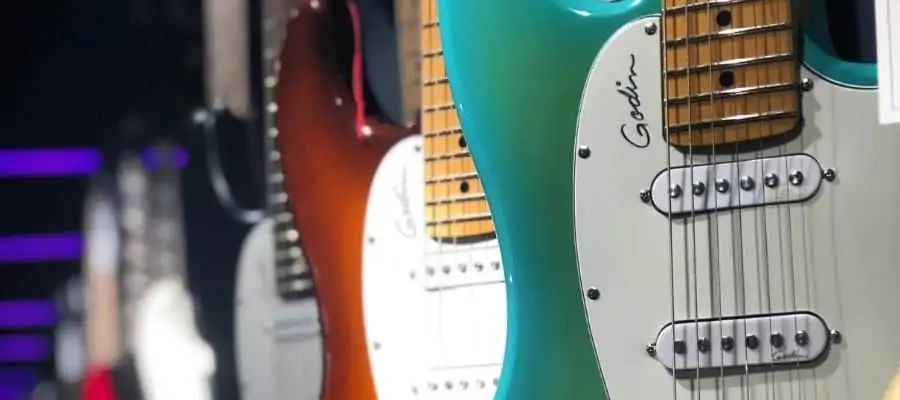
There are some guitars that the pickguard is the core of their identity. Without it, they just wouldn’t be the same. Quite a few electric guitars sport iconic pickguards. But there are a few acoustic guitars proudly showing their guards.
Fender Stratocaster
Probably the most famous guitar in the world. There are many copies and guitars based on the Strat. There are some gorgeous carved tops and flame tops. But if you want the original, the pickguard is irreplaceable.
Fender Telecaster
The first electric guitar ever made. Leo Fender got it right the first time. The guitar is used a lot in country music. And those guys really know how to pretty up a guitar. Often their aftermarket Tele pickguards are a statement of their identity. Made from metal, plastic, or embossed leather.
Fender Jazzmaster
Another Leo’s design that you just can’t imagine without the guard. It covers the majority of the guitar’s body. And based on the color of the guitar, the color of the pickguard is matched to achieve the design goal.
Gibson SG
There are a few incarnations of this guitar. There are some that the pickguard is larger around the pickups from upper to lower horn. And one that has smaller “Les Paul” type guards below the pickups. With this visual change, you can often decide from what year the guitar is by not looking at anything else—something hard to do in many other guitars.
Brian May BMG Special
One of the most iconic guitars in history. From one of the best rock guitarists ever. Brian May from Queen. It was his own design. He and his father built the guitar. Although a lot was changed on the guitar during the years, one thing is constant—the pickguard.
Gibson Flying V
This guitar is just pure rock n roll. It’s been a favorite by many rock giants throughout history, played on numerous albums and stages worldwide. And if you see one, you immediately know what the guitarist is playing.
Gibson Hummingbird and Gibson Dove Original
These acoustic guitars are hard to imagine without their landmark pickguards. The shape is the same, but the inlays are where they differ. You just can’t put a regular-shaped pickguard on any of these guitars. It would be blasphemy.
Martin D-28
The most copied acoustic guitar in the world is Martin D-28, and also the most copied pickguard for acoustic guitars again is the pickguard of D-28. We can say today this shape of the pickguard is an industry-standard. But can you imagine a D-28 without one? No way.
There are many more guitars to write about, but we don’t have the room. In my opinion, seeing one of these guitars without a pickguard feels really strange. They are not the same without one.
Conclusion
So are they necessary? Well, it’s a rather complicated question. But with a simple answer. On some guitars, they are part of their design, and they are necessary. But on others, you can choose to put one on. Gibson Les Paul is one example. There are ones with and ones without one. Acoustic guitars too.
So it’s up to you to keep your guitar in original pristine condition. Or do you like to wear to show? Companies often ship the guitars with the pickguard aside, so you can put it on if you choose to. Sometimes you don’t like the existing pickguard on your guitar. No problem, today the market is filled with aftermarket replacements in all styles and colors.
If you found this article useful, you may want to save this pin below to your Guitar board.

Recent Posts
Some guitarists insist on buying an expensive amplifier with their electric guitar. They assume that this is a must for every type of guitarist out there. However, in some situations, this isn’t...
Top 50 Free Realistic Guitar VST Plugins With Sound Examples
As technology has rapidly advanced in the recent decade, computers are stealing more and more roles from physical musical instruments and accessories. Nowadays, you do not need expensive amps,...

